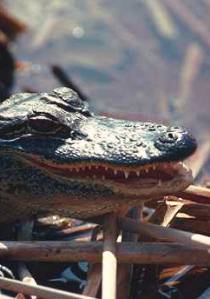2 January 2000
Show us your fangs (please)
by Kate Melville
 Here is a great Trivial Pursuit fact (it's probably not yet in the game) - 20% of the population are born unable to develop a full set of teeth.
Here is a great Trivial Pursuit fact (it's probably not yet in the game) - 20% of the population are born unable to develop a full set of teeth.
While the underlying causes of this orthodontic anomaly are unknown but thanks to acute clinical observations this may no longer be such a mystery thanks to the discovery of the PAX9 mutation.
PAX9, one of a family of genes that help control body shape and organ formation during embryological development. Scientists from the University of Texas-Houston and Baylor College discovered the PAX9 mutation in a family where congenitally absent molars were clinically documented in three generations.
The discovery of the PAX9 mutation began when Dr. Rena D'Souza, an associate professor of orthodontics, asked her students to look for patterns of missing teeth in their patients. One student, Monica Goldenberg, observed a 13-year-old boy who was missing 14 permanent teeth. Further enquiry revealed that the boy's father and two brothers had a similar condition, and out of 43 family members, 21 were determined to have congenitally missing molars.
According to Dr. D'Souza ,"This is an example of an astute clinical observation unveiling a classic pattern of autosomal dominant inheritance, where offspring of both sexes have a 50-50 chance of inheriting a mutated gene and the disorder associated with it. From that point it was a matter of applying the techniques of molecular epidemiology and DNA analysis to identify the gene."
Once they made their initial breakthrough D'Souza and the Baylor collaborators followed the inheritance pattern of known DNA markers in affected family members, They tracked the responsible gene to a narrow region of chromosome 14, the same region that contained PAX9. A detailed analysis of PAX9 revealed an extra nucleotide in the gene, a mutation that would interrupt gene translation and result in a smaller than normal PAX9 protein. "PAX9 became an obvious 'candidate' gene for the missing teeth because of what we knew from animal studies," said D'Souza.
As to exactly how the PAX9 mutation affects the development of teeth will now be the subject of future research. PAX9 is one of the several genes activated early in tooth development and works by producing a DNA-binding protein which controls the operations of other genes. D'Souza's team think that the effects of the mutation in the Houston family may mean that there is not enough active PAX9 protein to complete the development of all types of teeth. The baby teeth and anterior permanent teeth form because they don't require as much PAX9 as the more complex teeth. "Just like there is a genetic code for the entire body, each tooth family, such as incisors, cuspids, and molars, may have a unique code that controls development," said D'Souza.
This discovery is an important contribution to understanding the genetics of human tooth development and brings scientists a step closer to someday replicating the process.
